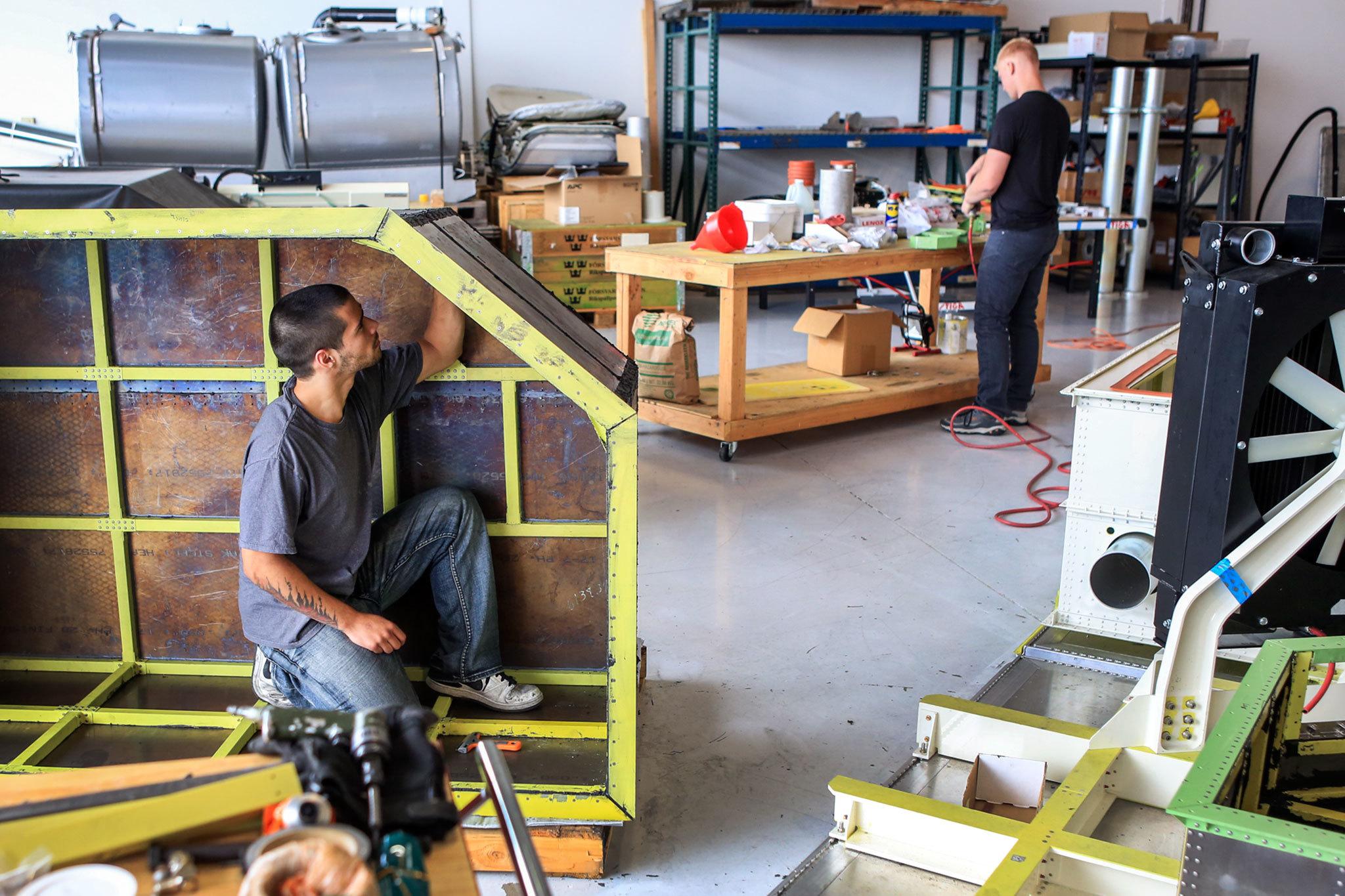EVERETT — For many flyers today, Boeing’s 737 means shoehorning into a seat that seems every year to shrink, racing to shove a roller bag into crammed overhead bins, and, when nature calls, finding the sole path blocked by the drink cart.
Single-aisle airplanes such as the 737 might be the unglamorous city buses of commercial aviation, but an Everett aerospace engineering firm and a British aviation company want to put Boeing’s workhorse on the front lines fighting environmental devastation.
Waypoint Aeronautical at Paine Field and RVL Group in the United Kingdom have designed a system to enable 737-400 freighters to help break up oil spills at sea.
The Oil Dispersant Spraying System is RVL Group’s brainchild. The company reached out to Waypoint for help in making it a reality.
The modular system can be loaded onto a modified freighter in about four hours and reloaded in between drops in 30 minutes. The plane then flies over an oil slick, spraying a chemical mix called dispersants. The spray causes the oil to ball up. The resulting oil globs are then heavier than water, so they sink below the surface where bacteria can break down the oil.
The system does not dump the 4,200 gallons of dispersants its tanks can hold all at once like a wildfire tanker. The plane flies about 200 feet above the oil slick at 200 knots, spraying a mist from nozzles at the rear of its fuselage, emptying its tanks in a little more than five minutes. A dedicated operator in the cockpit runs the system.
Skimming or sopping oil from the ocean surface are the preferred methods for dealing with spills. Those methods remove the environmental threat. By contrast, dispersants can limit the damage and are considered a last resort, according to the National Oceanic and Atmospheric Administration.
However, the preferred methods both require calm sea conditions. Nature is not always so obliging. That is especially true in the North Sea and other waters around the British Isles, where the system will first be deployed.
RVL Group provides oil spill-fighting aircraft for the United Kingdom’s Maritime and Coastguard Agency. Currently, RVL uses Lockheed L-188 Electras, prop planes that would be considered vintage if a museum owned them.
“We’re really keen to get more modern aircraft,” RVL’s Tim Brandt said.
The Oil Dispersant Spraying System is already well along in testing and certification by aviation authorities in the United States and United Kingdom. Once approved, RVL Group plans to always have a 737-400 on standby with the system installed and loaded. It doesn’t own any 737s and doesn’t plan on buying any. Instead, it has contracted for the planes with a cargo airline, which will rotate freighters through shifts on standby.
Brandt declined to name the airline, only saying that it is a “major operator of 737-400” freighters.
ASL Aviation Group is one candidate. The company operates a dozen 737-400 freighters through its subsidiaries in Europe. The company did not respond to a request for comment.
Waypoint’s head of engineering Eric Lundeen sees a worldwide market for the systems.
“The need is geographical: Wherever you have offshore drilling or a lot of heavy shipping,” such as the West Coast, Lundeen said. “We could stage one here, and you could cover (the coast) from Alaska to Oregon.”
South Africa and Nigeria have expressed interest in the system. Oil spills are a major concern for South Africa. Massive oil tankers too big for Suez Canal regularly skirt the country’s southern coastline.
Waypoint is a small company with its headquarters at Paine Field and a small manufacturing operation in Arlington. The company has a core staff of around 12. It relies on a roster of contract workers to grow and shrink as projects require.
Much of its work has been modifying 727s, including designing and installing extended fuel tanks. That work prompted RVL to contact the firm for help on its oil dispersant system.
“We’re a small company, so right now, about 85 percent of our effort is on this project,” Lundeen said. “We’re looking to move more into manufacturing.”
Representatives of the petroleum industry have asked Waypoint about designing a system for burning oil off the ocean surface, a method called in situ burning. As with dispersants, it is typically considered a last option.
“Basically, it would be a flamethrower on a drone,” flying slow and low — about 100 knots and 80 feet over the water, Lundeen said.
Dan Catchpole: 425-339-3454; dcatchpole@heraldnet.com; Twitter: @dcatchpole.
Talk to us
> Give us your news tips.
> Send us a letter to the editor.
> More Herald contact information.

























